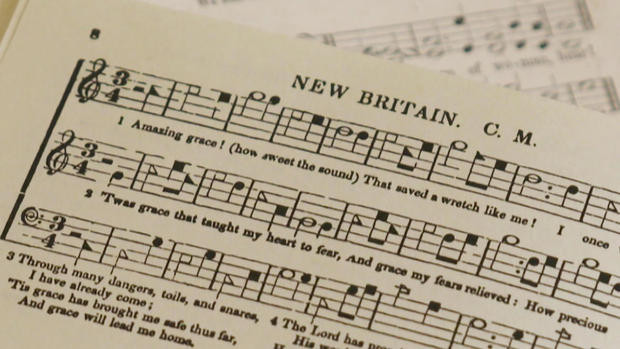“Amazing Grace,” a song estimated to be sung over 10 million times annually, celebrates its 250th anniversary. Contrary to popular belief, its origins are not rooted in American Black spirituals but across the Atlantic, in the quaint English town of Olney. The lyrics, penned long before the American Declaration of Independence, carry a profound story of redemption and transformation. But who exactly wrote this timeless hymn, and what inspired its enduring message?
Music journalist Steve Turner, author of “Amazing Grace: The Story of America’s Most Beloved Song,” perfectly encapsulates the hymn’s universal appeal: “I was lost and now I’m found, I was blind and now I see – it’s an experience most people can relate to.” These iconic words are the profound reflections of John Newton, a former slave trader whose life took a dramatic turn after surviving a near-fatal shipwreck. He later dedicated his life to ministry and wrote the lyrics to “Amazing Grace” for his New Year’s sermon at the Church of St. Peter and St. Paul in 1773. However, the melody that we recognize today wouldn’t be paired with his powerful words for another half-century.
While Newton provided the poignant lyrics, the familiar tune of “Amazing Grace” emerged later in America. Initially, several melodies were associated with Newton’s words, but none became consistently linked to the hymn. It wasn’t until 1835 that an American Baptist, William Walker, published “The Southern Harmony” hymn book, featuring a song titled “New Britain.” This melody resonated deeply with the lyrics of “Amazing Grace,” and the combination began to capture hearts across America.
 Sheet music of New Britain melody from The Southern Harmony hymn book, the tune of Amazing Grace
Sheet music of New Britain melody from The Southern Harmony hymn book, the tune of Amazing Grace
“It caught the imagination of America,” Steve Turner explains. “‘Amazing Grace’ is, in a sense, the story of starting this new life and going through toils and snares.” “The Southern Harmony” utilized “shape notes” – a system using triangles, ovals, rectangles, and diamonds – to simplify music reading for the general public. This innovation facilitated the hymn’s spread, particularly in the Deep South, reaching both slaveowners and enslaved people who were compelled to attend landowners’ churches.
Turner highlights the profound connection enslaved people felt with “Amazing Grace”: “because they knew what it was like, in a very real way, to be in exile.” The hymn’s themes of redemption and finding light in darkness resonated deeply within their lived experiences.
Over time, “Amazing Grace” became increasingly intertwined with Black spirituals and later became a powerful anthem of the Civil Rights Movement in the 20th century. Its message of hope and resilience continued to resonate through different eras.
In 1970, amidst growing opposition to the Vietnam War, folk singer Judy Collins’s moving rendition of “Amazing Grace” marked another significant resurgence for the song.
Turner notes that an overwhelming majority of “Amazing Grace” recordings – “90-95%” – were made after Judy Collins’s impactful performance. Collins herself described the song as one of “hope and healing,” emphasizing its capacity to provide “a moment of hope” during difficult times.
“Amazing Grace” has consistently emerged as a source of solace and unity during moments of national grief and crisis. From President Obama singing it at a memorial service to its use during the COVID-19 lockdown to uplift healthcare workers, the hymn’s message of hope and resilience transcends time and circumstance.
From its humble beginnings in a small English town, “Amazing Grace” has become a global phenomenon, even reaching space, as demonstrated by NASA astronaut Kjell Lindgren playing it on bagpipes.
NASA astronaut Kjell Lindgren plays Amazing Grace on the bagpipes
John Newton, the man who wrote the words to “Amazing Grace,” could hardly have envisioned the song’s extraordinary global journey. As Steve Turner concludes, “I think he’d be really pleased. There are not many songs in the world that last 250 years!” The enduring legacy of “Amazing Grace” lies in its simple yet profound message of hope, redemption, and the unwavering power of grace, continuing to inspire and comfort millions across the world.

